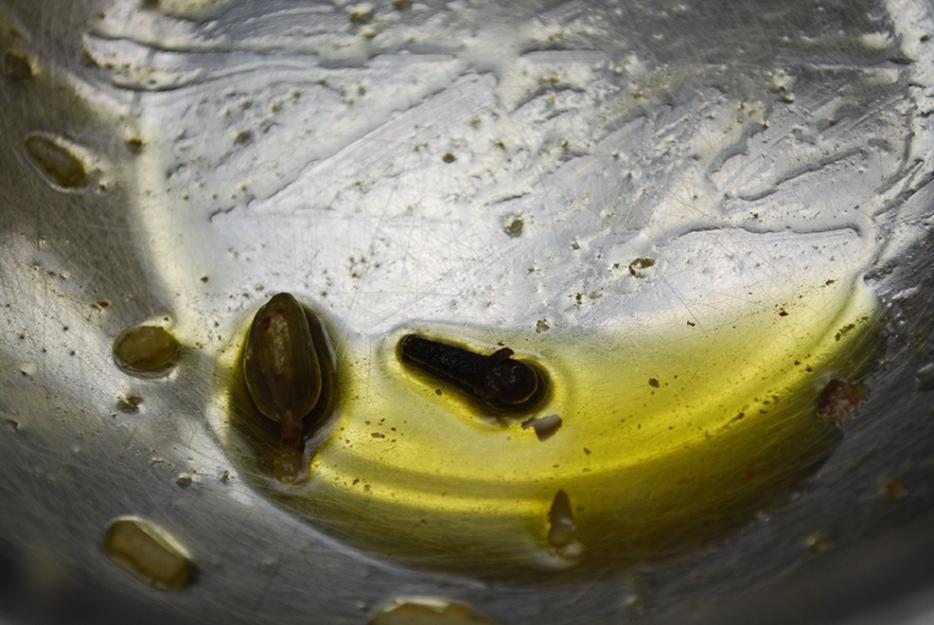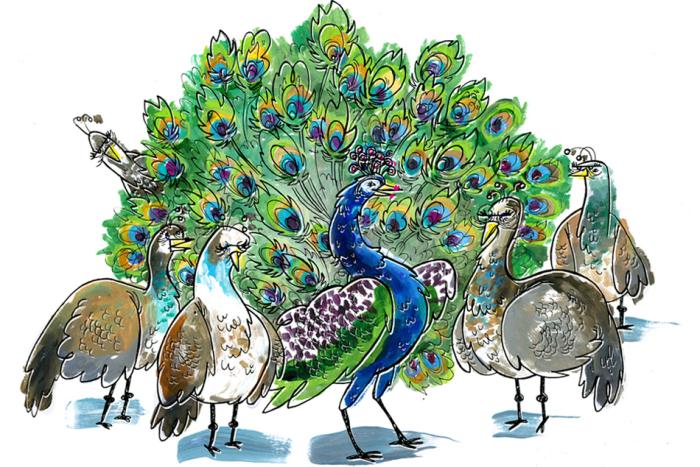Though it grieves me to say, I think the time has come to give up on "chai tea." Not the drink, of course—what would Saturday afternoons be without that milky, sweet elixir that, at least in my home, is steeped in cardamom, cinnamon, fennel, and ginger? What I mean is that it's time to give up on fighting against that maddening name.
In Hindi, chai means tea. That means that every time you're in a cafe and hear someone say "I think I'll get, like, a chai tea," it sounds to many South Asians as if they're saying "tea tea"—which is not only redundant, but also sounds a little dirty ("Hey bro, wanna go the chai tea bar?"). This is where we are, though, and it seems like the moment to do anything about it—if there ever truly was one—has passed.
There are, however, worse things in the world than slightly inaccurate neologisms. History is full of examples of strange mistranslations that, over time, become standardized. If millions of people now know a drink as chai tea, so be it—language changes, and people do, too. But given the long history of the West not only liberally borrowing from but profiting off "Eastern" cultures, at what point does the pleasing newness of cultural fusion become unabashed cultural appropriation?
It's a question that's been on my mind since last week, when Canada's most-read newspaper ran a story about a young entrepreneur making "artisanal ghee"—the clarified ghee product common in many South Asian homes. To top it off, the piece ran with the subject wearing a sari (though the subject later suggested she was coerced into it). Still, it had all the trappings of columbusing—"white person discovers what is utterly ordinary to hundreds of thousands of readers"—and the eyeroll the piece received, at least in my social media feeds, was so severe it was almost audible: "This bullshit again?"
Part of the problem with cultural appropriation is the entitlement involved—that sense that, for a certain kind of person, the whole world is waiting to be mined, packaged, and sold, regardless of what the things in question mean to people, or whom such selling benefits. Even if, from one angle, something like artisanal ghee both looks like and in fact is a product of benevolent entrepreneurism, such trends have a discomfiting similarity to the legacy of Western colonial exploitation that continues to this day.
More than that, the story reaffirmed that one of the things that can most grate about being a minority in the West is the disparity between public and private. If it takes a pretty white woman for people to learn about the stuff your folks have always used to cook daal, the dynamics of what runs under "ethnic" as a codeword become clear. When something like "artisanal ghee" makes its way into the newspaper, it reminds one of to whom the space we call the public—the norm, the default—actually belongs. It's not the end of the world—white people gonna white—but it's one part of a series of small annoyances that maintain the disparity between a white centre and a non-white periphery.
But where did this pattern—of a Western norm hoovering up bits of "ethnic culture" and, often, spitting them back out in the form of expensive "artisanal" products, from bindis to Chinese medicine to the accouterments of Rastafarianism—come from? The answer, I think, goes beyond some oblivious if well-meaning white people. Not to be the sort of person who liberally uses terms like “late capitalism,” but… late capitalism really has done a rather good job of making the world seem somewhat homogenous. I've sat just north of New Delhi discussing Friends while eating McDonald's in front of a Domino's Pizza. I've had Starbucks in the shadow of Edinburgh Castle, and even seen a Tim Hortons cup lying on an Irish country road. You can find the world you want almost anywhere.
In such a sea of uniformity, however, it’s hard to mark oneself out through individual tastes. You can eschew The Big Bang Theory in favour of The Fall on Netflix, or choose arthouse cinema over Michael Bay, but thanks to the web and the accelerated pace at which the niche becomes mainstream, finding one's uniqueness in conspicuously consuming the unknown cool thing has become infinitely harder.
Where we end up is the fetish for authenticity. As Johannah King-Slutzky wrote in a brilliant essay on "normcore food," what modern consumer culture craves more than any other thing is purity—the untouched or unknown thing that, brought to light, evokes a history that is more natural or authentic. Craving and consuming the authentic in such a fashion lets us define ourselves in relation to a set of ethics and aesthetics instead of brands. Mason jars, beards, local, organic—all ways of conspicuously consuming without coming across as just another "mindless consumer."
King-Slutzky argues that the truly cutting-edge spurn that endless cycle of novelty for normcore food—the stuff that is neither artisanal nor kitschy, but that resists either of those trendy classifications by simply being blank. It's staying one step ahead of the trendiness game through inconspicuous consumption. But for the rest of the purity-seeking middle class, what could better perform cultural capital than artisanal ghee? Despite the fact that ghee is used by millions of people in North America, it’s "ethnic" enough to seem different, yet, at least in its newsworthy form, also local and organic. It stands at the centre of a web of alluring ideas: reclaiming a lost past while making the consumer eminently modern and cosmopolitan—a person of the contemporary world who has found the knowledge of history.
The ethnic—the collective traditions and practices of the world's majority—thus works as an undiscovered country, full of resources to be mined. Rather than sugar or coffee or oil, however, the ore of the ethnic is raw material for performance and self-definition: refine this rough, crude tradition, bottle it in pretty jars, and display both it and yourself as ideals of contemporary cosmopolitanism. But each act of cultural appropriation, in which some facet of a non-Western culture is columbused, accepted into the mainstream, and commodified, reasserts the white and Western as norm—the end of a timeline toward which the whole world is moving.
That pattern of dismissive, oblivious misunderstanding can turn into a low roar—a kind of tinnitus for what it means to be an ethnic minority in a Western cosmopolis. Yet, at the same time, it's also true that such acceptance of what is private to me into the general public can also be strangely reassuring. Westerners might have gotten the name wrong, but that I and someone who isn't Indian can bond over some—ahem—elaichi chai as if it were a normal part of both of our lives somehow ends up being sort of nice.
Where, then, is the line that divides the simple pleasure of cultural fusion from cultural appropriation? One answer is that it becomes appropriation when one group's sense of “normal” inexplicably and unfairly dominates over another. Consider: over the past twenty or thirty years, yoga, once a fringe hippie practice in the West, has become an ordinary part of middle-class Western life. In nearly every city in the world, you can hear yogis intone the word namaste with a profound seriousness. Repeated in yoga studios the world over, the etymology of the word combines the ideas of bowing in the face of the other, and recognizing the divine in the spiritual creature across from you. It's a nice thought.
It’s even sort of true. It’s a generous reading, sure, but that is in fact the root of the word, and yogis in India would also be happy to tell you the same. But the word as it is actually used daily by about half a billion people of Indian descent means only ... "Hello." That's it. No divinity, no deep spirituality, no profound recognition of the supernatural running through us all. Just: hello (if perhaps a slightly formal way of saying it). If you believe that the trace of a word's etymological roots runs through it in some kind of collective unconscious, then perhaps you feel that its more spiritual origins are still there. Yet each time a non-Hindi speaker insists on the more divine interpretation, what they’re also saying is: what this word means to me is more important than what it means to you, your feelings, your history, and your culture be damned. Though the gradual nature of these "little colonizations" can feel innocuous, it is the aggregate effect of so many of them over time that can turn what might seem minor into a troubling phenomenon.
So, chai tea? We can let slide. Knock yourselves out. Order two. Words can change in meaning. But sometimes it can be hard to distinguish between those parts of culture that have changed gradually over time, and those which have been violently yanked away, taken over, and put to a maddening, centuries-long end.






